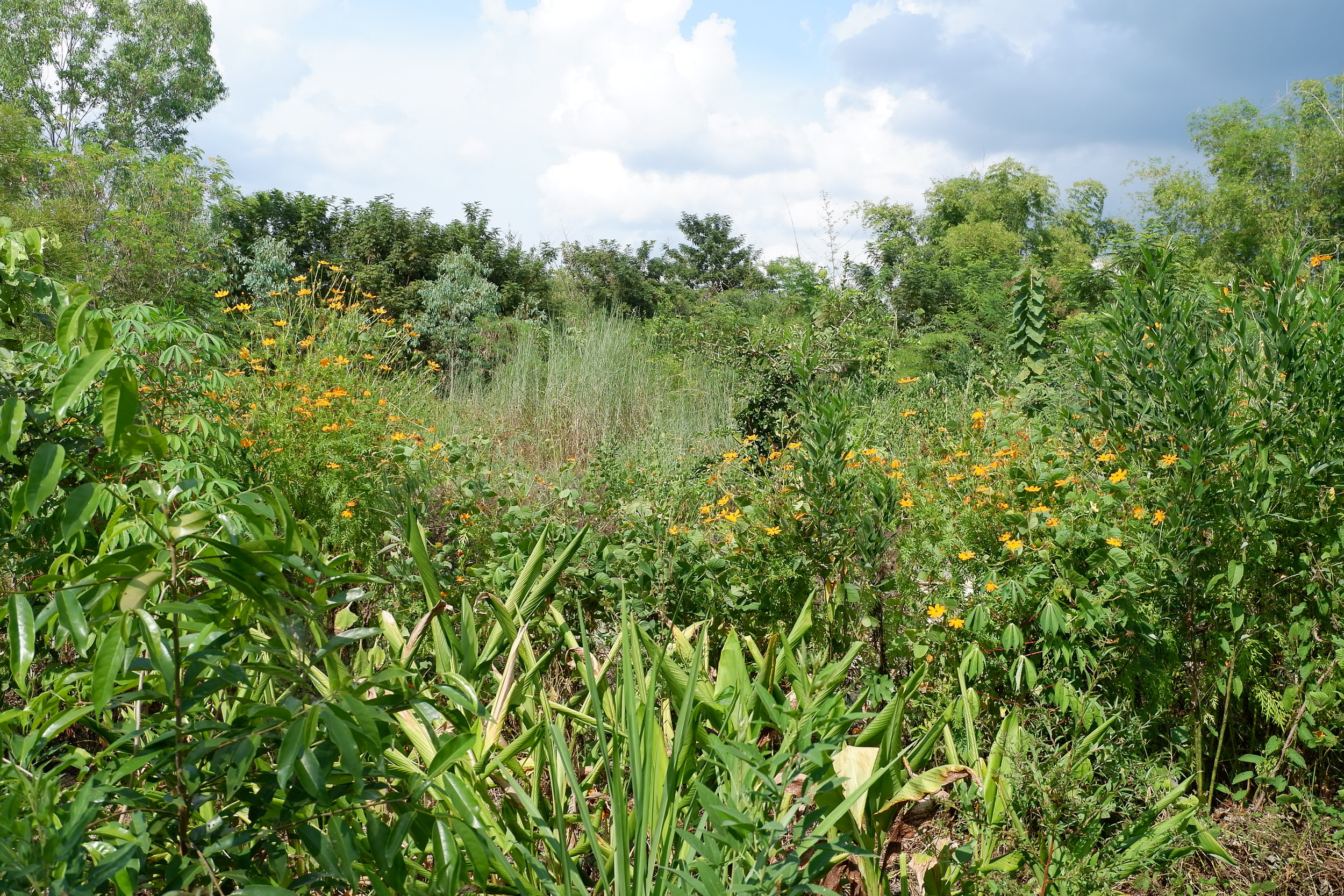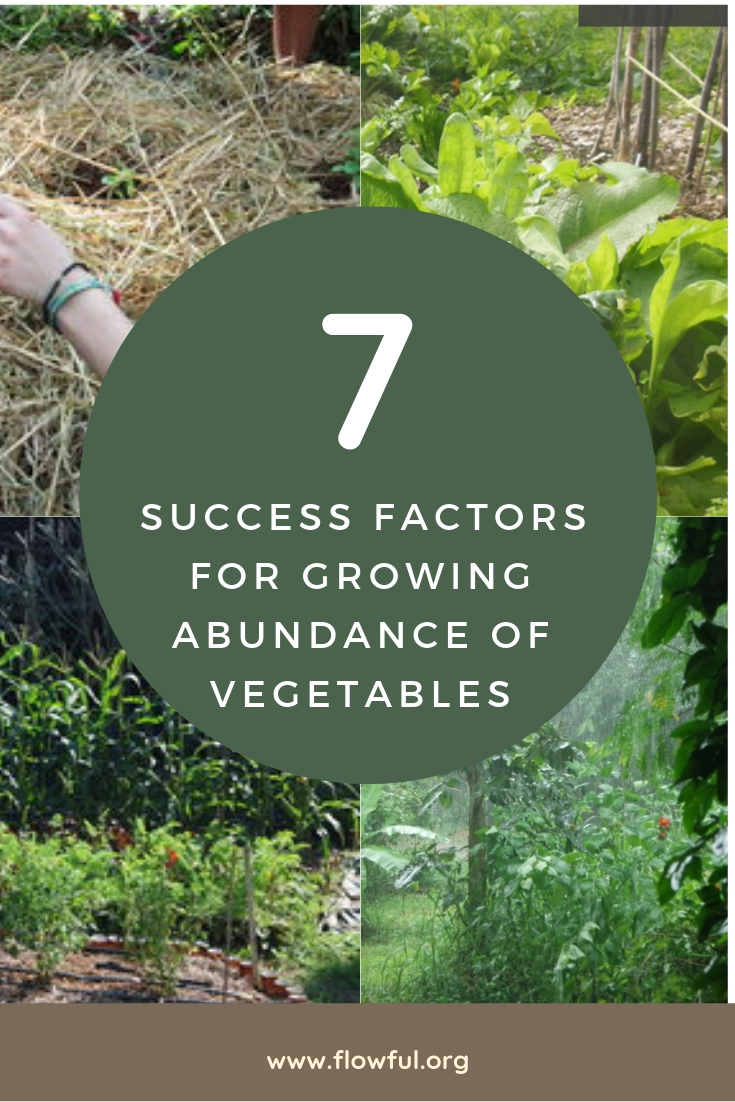How to create an ideal site for growing vegetables?
How to create an ideal side for growing vegetables
Exploring the 7 key success factors for abundance of vegetables
A well-designed and managed vegetable garden can produce a lot of food, even on a small plot of land. While growing your own vegetables, you claim back the control about the quality of food you’re feeding your family with. Plus, you also get some daily exercise and meditation practice. Consuming your own vegetables and sharing with your neighbors is also a way to make your local community stronger and is a first statement for healthy and local food. In this post we are exploring the 7 key success factors for growing vegetables for temperate and tropical climate and give recommendations on how to manage each of them.
If you want to experience and learn more about gardening and permaculture, you might want to join our next 17-day PDC starting in November 2020. Get all the information right here! For the time in between, we highly recommend our Free Online Permaculture & Resilience Course. Start today, no registration needed.
Author: Lars Blume
Growing vegetables in abundance depends on several factors.
Growing vegetables is not always easy. You want to have a good harvest in exchange for all the time and effort you put into your garden. However, like with everything in life, growing vegetables has also a steep learning curve and especially in the beginning you might feel frustrated at the end of the garden year having to buy most of your vegetables on the farmers market. The most powerful factor determining our ability to grow our own food is the annual weather conditions. Even though we cannot control, we can manage the negative impact it might have on the expected yield.
Let’s look at the seven sucess factors.
Managing the power of the sun around your vegetable site
A trellis can give shade to the baby plants.
Vegetables love sun and in temperate climate we are looking for open, not shaded sites for the vegetables to receive as much sunlight as possible. In an ideal world (and only true for the northern hemisphere), vegetable beds are facing north-south during the summer month and east-west for winter crop.
For tropical climates it is slightly more complicated. Vegetables still love sun, however during the dry season the power of the sun can easily destroy or stress the plant in a way that it will be not productive. During the rainy season plants are appreciating light and sun. It speeds up the vegetable growth and helps to reduce the risk of fungus. At Gaia Ashram, we are using fast growing trees like leucaenaor perennial legumes like pigeon pea. During the rainy season we are using both for mulching while in dry season they cover the vegetable plants and take away some sun power.
Protecting your vegetable site from wind
A few rows of corn can protect more sensitive plants from wind.
A windbreak can also be a colorful hedge.
Wind has a high impact on vegetable production. Even sheltering from light wind can increase the productivity significantly. However, wind also helps to take moisture and the risk of fungus and other diseases away. Thus, finding or creating an optimal sheltered place is a bit of a tricky task. If the wind in your area is an issue, it is important to create a windbreak that still allows some air flow in order to avoid turbulences on the other side. A hedge, trees, or even high growing vegetables can create a living shelter for the more vulnerable plants. But also non-permanent solutions such as artificial windbreaks can work to protect your vegetables from wind. Old burlap bags between wooden posts are working well for example and are a relatively cheap solution.
Back in time, the English kitchen garden used to be protected with a stone wall. The wall provided shelter but it also was able to absorb the heat of the sun and stored it till night time before releasing it. This microclimate, mainly relevant for the south-facing wall, helps to extend the growing season or to grow crops that would require a warmer climate under normal conditions.
Building fertile soil for your vegetables
You can restore soil while growing edible cover crops such as spinach or cassava.
Building up soil around fruit trees brings some extra nutrients for it.
Healthy vegetables need healthy plants, and healthy plants need fertile soil that is rich in nutrients. Getting as much organic matter in the soil is the main target. It actually depends on your plot of land how urgent it is but if you want to sustain your harvest over some years it is good to start working with the soil right away. For other gardens, like the one we are working on at the moment, it is essential to build up soil first before putting effort and energy into planting veggie crops. But even in this stage it is possible to obtain a yield while focusing on soil regeneration. Whereas in temperate climate 80% of organic material is already in the soil and only 20% are in plants and trees, it is the other way around in tropical climates. With 80% organic matter in growth the main task is to bring the organic material back to the soil to provide sufficient nutrients for the plants and the vegetable growths. One easy-to-apply approach is the so-called chop & drop method, where you literally just cut branches or entire supporting plants and leave it directly on the ground as green mulch.
Ensuring sufficient water supply
Ensuring sufficent water suply for your vegetables is important.
Water supply is always key. Having the ability of harvesting and storing rain water or having access to ponds or streams is a great asset. Access to rain water gives you the ability to meet the water demand of the plants. The tropical climate comes with a dry and a rainy season so the need of storing enough water during the rainy season to water the plants throughout the dry season is essential. In temperate climate the amount you have to store might be less, but with changing weather conditions a very dry spring and summer might leave you with no crops behind.
Sufficient amount of water also requires a good drainage for the vegetable plot. You don’t want your plants sitting in water as roots easily can rot or fungus might appear.
Saving seeds from the land
Keep the seeds from the best performing plants.
Planting the sprouting seed of a new community vision.
When starting your vegetable plot, ask around in your community for open-pollinated varieties or even heirloom vegetables. Open-pollinated seeds are naturally produced from cross-pollination resulting in plants that are very similar in terms of flavor and yield. Getting seeds or seedlings from your direct neighbor is the easiest way to start as the seeds have been gone through a naturally selection and are already adapted to the local environment.
If you buy seeds, seedlings, or plants, just ensure that they are naturally open-pollinated varieties. This will give you the freedom from the very first beginning to reduce your dependency from seed companies and follows an age-old tradition in gardening practice.
Seed saving comes with little extra work but the results can be extremely rewarding in terms of future productivity and resilience. You will reduce your expenditures and over the years you can build up your own varieties. In order to increase resistance to pests or the quality of your vegetables fitting your desired taste, yield, or requirements, it is important to look for the best performing plants. Besides saving money you can help to preserve the particular varieties you are growing and share it with seed banks, neighbors or at seed saving events.
Using the strength of community
You might not be able to produce all the food you need and your space might be also limited to grow a lot of different varieties. Teaming up with neighbors, within your village or community can open a new dimension of growing vegetables. Focusing on a few varieties in your garden but sharing your surplus with others that had focused on different varieties is one way of increasing quantity and diversity of your harvest. Sharing seeds, seedlings, knowledge and material, or processing food together are other ways of making growing vegetables easier and more fun. While creating a network of vegetable growers you are keeping money within your community and you’re reducing the reliance on external markets even more. As a last step you might start to team up and sell your surplus as a kind of cooperative on local markets to gain some additional income.
Want to learn more
Gaia Ashram together with NextGenoa and flowful will organize a Permaculture Design Certificate (PDC) COurse between March 25 and April 10 at Gaia Ashram Thailand. You can find more information here or just drop us a message; we’re happy to hear from you.
At the moment we are designing the courses for our summer break (May/June) in Germany. We will have several weekend courses and also a PDC-Course happening. To get more information just write us a message; we will keep you posted.
If you want to experience a design process join one of our workshops or invite us to your property and become the host for the next workshop. Just drop us a mail for further information. Or just subscribe for our monthly newsletter.
Furthermore you can join Gaia Ashram an community based education centre as a volunteer and learn more about gardening, spirituality and nature connection, For futher information check www.gaiaschoolasia.com.
Related post:











The optimal garden bed for your specific framework conditions will help you to increase your vegetable harvest, enrich soil fertility and reduce the amount of maintenance over the years. This article guides you through 5 different ways of creating a garden bed for vegetable growth.